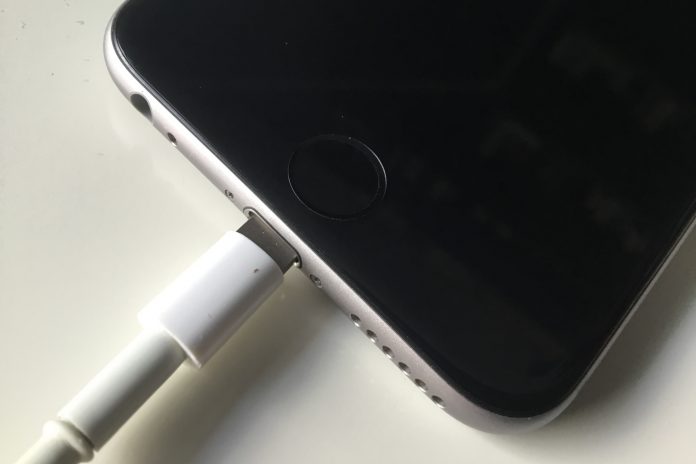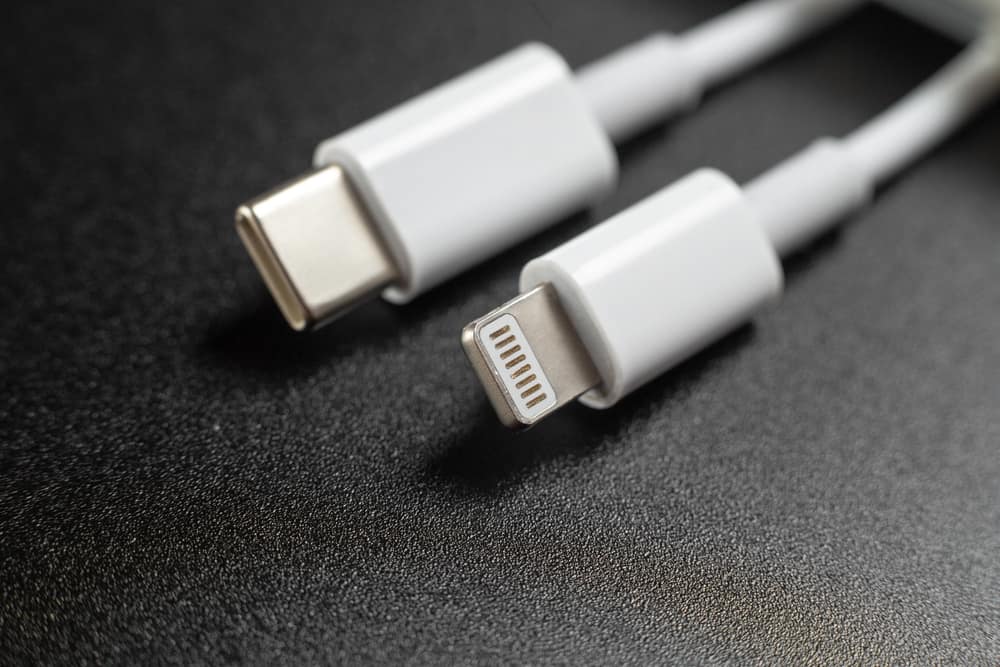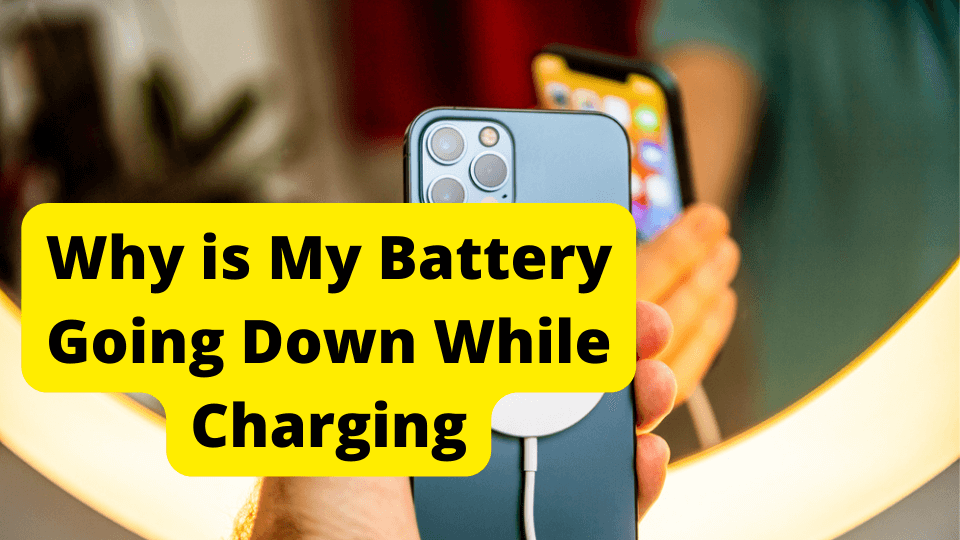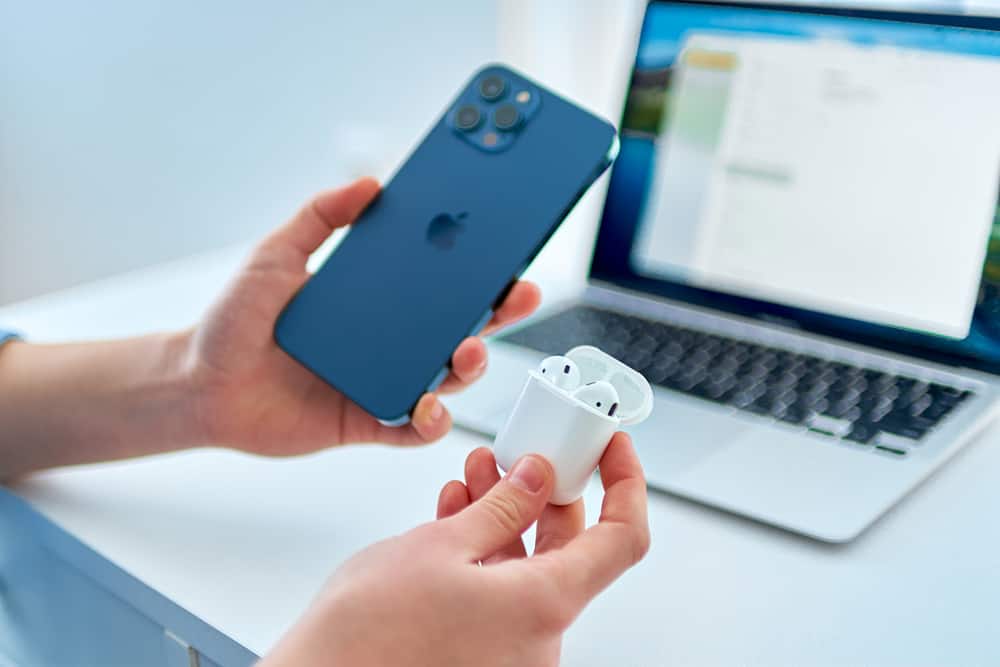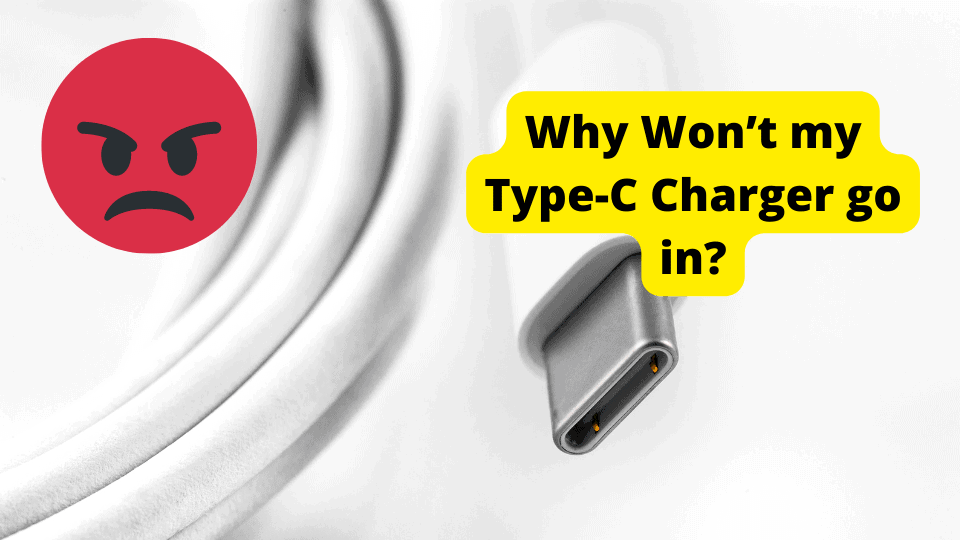Key Takeaways
- Check for MFI badge on the packaging to ensure authenticity.
- Look for “Designed by Apple” or “Assembled in” text.
- Inspect connector ends for smoothness and correct dimensions.
- Ensure USB interlocks are evenly spaced and gold-plated.
- Fake cables may lead to device damage and overheating.
There are a lot of fake Apple chargers out there so I don’t blame you on your curiosity. Her, if I just purchased a Lightning Cable I’d wonder if it is genuine as well.
Anyway, you’ve come to the right place.
In this article, I’m going to be explaining to you the reason as to why it’s important to have a real Apple Certified charger and what can happen if you are the owner of a Counterfeit Lightning cable.
More importantly, I’ll be showing you how to identify whether or not, if an Apple Lightning cable is genuine or not.
Why Do I Need an Apple Certified Lightning Cable?
Note: You do not need to buy your Lightning Cable from the Apple website or an Apple store for it to be an Apple Certifed charger
It’s common knowledge that you need a genuine cable when charging your iOS device. Apple recommends you to do so.
But what happens when your Lightning Cable is uncertified?…
Damage to your iOS Device
When you use a ‘fake’ charger then it could damage your iPhone, iPad, Mac and other Apple products.
This is because when the lightning end of the charge is plugged into your device, it may interfere with the real components in your charging port and will slowly damage it in the long run.
Over time, you may see yourself purchasing a new device which we all don’t want.
An uncertified charger is easily damaged
We all have a friend who’s Lightning Cable is on the brink of disappearing. The end of it is hanging by a thread and they are probably using some tape to cover up the crime scene.
When your Apple lightning cable is fake then the cable or wire should I say will be easily susceptible to damage.
This is because genuine chargers are made using stronger material than a fake charger. If you don’t want your money going into the drain then I suggest you go and get yourself an Apple Certified charger.
Overheating devices
If your Lightning Cable isn’t Apple-certified then you may find that your iPhone or iPad is too hot to handle when using it. This may also be the case when trying to handing the Lightning Cable itself.
Counterfeit charges have to work harder in order to transfer more voltage to the device that needs charging.
This isn’t the case for real Apple lightning cables as their charger are engineered properly.
Unable to sync and charge your devices
When you want to backup or update your iOS device using iTunes then you may find that iTunes may be unable to recognize this device as your charger won’t be properly connected to your PC.
Even though you have pushed it in hard enough.
If you constantly see the message ‘This Accessory may not be supported’ then a fake Apple charge is usually the reason why.
Now let’s get into how to actually spot a counterfeit Lightning Cable
How to tell if a Lightning Cable is Fake: In 3 Steps
1. Have a look at the charging cable and the MFI badge
Firstly, you will need to have a look at the box your charger came in. If your Lightning Cable didn’t even come in a box then this is already a sign that it may be counterfeit.
Third-Party accessories usually have an MFI badge on their boxes.
MFI stands for Made For iPhone/iPod/iPad. This is a licensing programme that for Apple technicians that work with iOS products such as the ones listed above.
This badge makes it easier for them to spot uncertified products.


If it looks anything similar to this then that’s fine. Some accessories still use the old badges on their packaging.
Now you will need to look out for any of these two statements on the cable.
- Designed by Apple in California
- Assembled in China, or Assembled in Vietnam, or Indústria Brasileira
You should be able to see at most, two of these close to the USB end of your Lightning Cable.
There should also be a 12-Digit code next to one of these statements.

If you can’t see any of these then you may want to consider purchasing an Apple Certified Lightning Cable for under $10.
Even if you don’t see all of these things, it doesn’t mean your charger is fake.
Read below and try and spot the next few clues.
2. Check for Branding on the Connector End
The connector end is the bit where you plug into your iPhone or iPad. Not the USB end.
Third-Party companies usually have their brand or logo on the connector end of the cable.
This is a very good sign that your Apple charger is genuine.
3. Check the Connector End and its Impressions
Having a look at the connectors on the Lightning end and the USB end is a good way of telling if your charger is Apple certified.
These are the details that counterfeit companies usually get wrong as they are very hard to notice.
Have a look at the images down below and compare them to your own Apple charger.
Lightning connector end
The lightning connector end usually flat copper strips that are symmetrical to the human eye.
These strips are usually rounded and are a gold, copper or silver color. 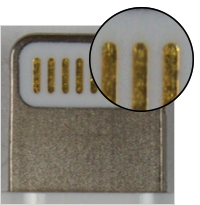
Counterfeit ends are usually rougher compared to the image seen on the left. They are less rounded and more rectangular shaped.
The length of the lightning connector end is 7.7 mm x 12 mm. It shouldn’t be anything more or anything less.
You can try and measure the length of this using Apple new measuring app. If it is anything less then there is a high chance that it is fake.
Check the USB end
The USB end is usually a good way of telling whether or not if your Apple charger is genuine or fake.
If you take a look at the interlocking ends of your charger then you should notice that these interlocking sections are usually equally spaced from the edge.
If these interlocking section (in the center) are faced the other way (to the right) then this is a red flag.
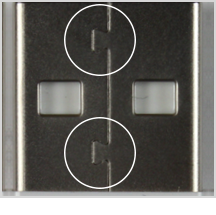
If you can see that they are equally spaced from end to end like in the image on the right then turn it around and check if the contacts are gold-Plated.
This silver section behind should also be flat and smooth
If these contacts aren’t gold then you may want to consider purchasing a new charger.
What should I do if my Charger is Fake or Damaged?
Unfortunately, there is no way to fix a damaged Apple charger.
My advice to you it to purchase this Apple Certified Charger from Amazon.
It is longer than the usual Apple charger which allows for more portability and movement.
Even though the cable wouldn’t have the statements I mentioned above, this doesn’t mean it is fake. It just means that there will be less damage to your cable in the long run compared to a rubber cable.
You can also consider visiting your local Apple Retail store and purchasing a charger from there.
If you have any questions about any of your iOS devices then you could visit a Genius bar which is similar to a retail store and ask the technicians there.
Bear in mind that the Lightning Cables in these stores are usually twice as expensive as the ones I recommend above from Amazon.
You can now tell the difference between a Real and Fake Charger
Now you know how to tell the difference between a genuine and counterfeit Lightning Cable.
Wasn’t too hard, was it?
If you have any below then feel free to let me know down below and I will be happy to help.
Thanks for reading. If you have any friends or family who want to tell if their own chargers are fake or not then share this using the social media buttons at the bottom of this article.


